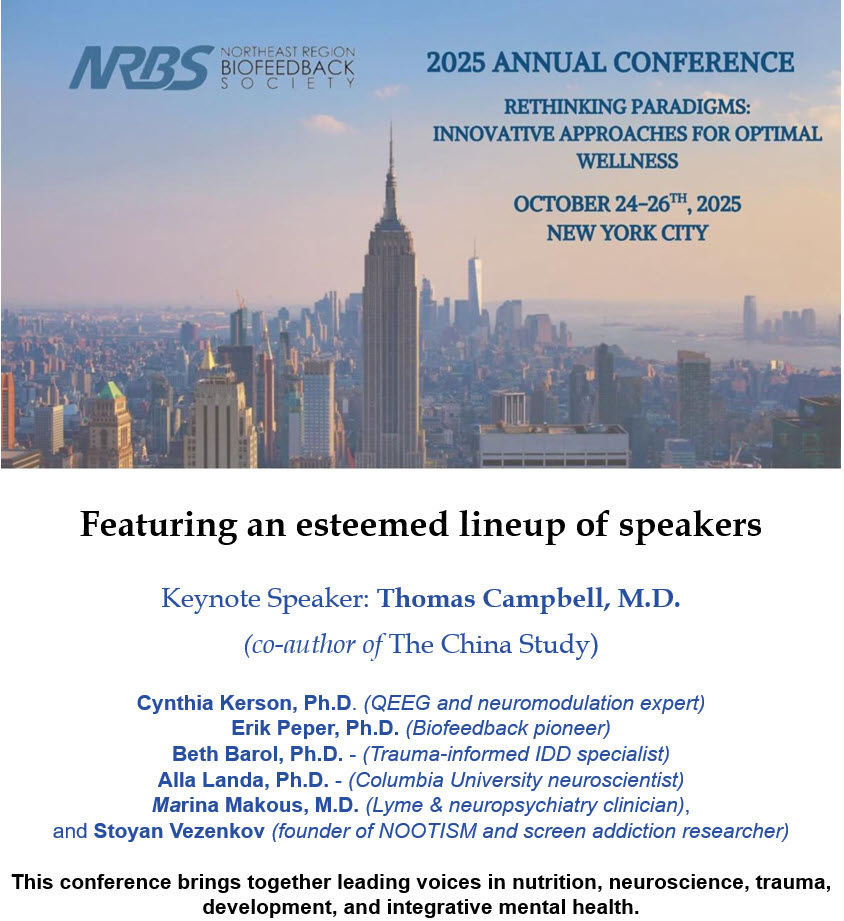Interpreting the Raw EEG: Slow Alpha
- BioSource Faculty
- Jun 19, 2025
- 14 min read
Updated: Jul 22, 2025

What Is Slow Alpha?
Slow alpha refers to posterior dominant activity that falls below the typical alpha frequency range of 8–12 Hz, most often between 6 and 8 Hz, though it may occasionally reach as low as 5 Hz.
Historically, any dominant posterior rhythm falling below 8 Hz in an adult was viewed with suspicion and often considered evidence of cortical dysfunction, particularly in the setting of metabolic encephalopathy, structural brain disease, or cognitive decline (Niedermeyer & da Silva, 2005). However, such an interpretation fails to account for the full physiological and dynamical properties of thalamocortical oscillators.
Not all slow alpha is a pathological sign. A subset of these slow rhythms, especially when reactive and morphologically stable, represents not a degradation of function but a subharmonic of the canonical posterior dominant rhythm (PDR), generated by the same resonant thalamocortical loop but oscillating at half the fundamental frequency (Pfurtscheller & Lopes da Silva, 1999).
This distinction is critical. In both mathematical and physiological systems, subharmonics are a known phenomenon, occurring when nonlinear systems resonate not only at their fundamental frequency but also at lower-order integer divisions of that frequency (Breakspear, 2017). In the case of slow alpha, a 5 Hz waveform may arise from a thalamocortical oscillator typically operating at 10 Hz, but modulated by factors such as arousal state, drowsiness, synaptic inhibition, or developmental neurophysiology (Babiloni et al., 2006).
Rather than reflecting a distinct slow-wave generator, the 5 Hz rhythm may reflect the same alpha circuit entrained into a slower, energetically favored oscillatory state. This can be transient or persistent depending on both intrinsic neural dynamics and external context. By reclassifying slow alpha as a variant of normative alpha function, particularly when it preserves reactivity and posterior localization, we gain a more accurate and nuanced understanding of brain rhythmicity and avoid pathologizing normal variance.
What Is Its Morphology?
The morphology of slow alpha retains many of the formal characteristics that define typical alpha activity, including regular sinusoidal waveform shape, a waxing-and-waning envelope, and consistent posterior scalp distribution. However, its slower temporal evolution leads to a distinctive visual impression. The oscillations appear broader and more widely spaced, and the envelope takes longer to reach peak amplitude and decay. This slow alpha graphic © The Atlas of Adult Electroencephalography.

While faster alpha rhythms such as 10–12 Hz may complete multiple cycles within a single second, slow alpha at 5–6 Hz produces fewer, more elongated waveforms. These long-cycle rhythms maintain a smooth, coherent shape and are often highly symmetric between hemispheres, particularly across P3–O1 and P4–O2 channels.
A distinctive morphological feature observed in some recordings of slow alpha is notching, where brief segments of faster activity appear superimposed or embedded within the slower waveform.
These notches may represent transient shifts in oscillatory state—moments when the generator attempts to accelerate to its fundamental frequency—or may reflect nonlinear summation phenomena in which the waveform temporarily entrains to a higher harmonic.
In EEG recordings where the slow alpha is a subharmonic of a 10 Hz generator, these embedded 10 Hz cycles emerge as brief, localized bursts that do not disrupt the overall structure but rather enrich it. They underscore the concept that what we observe as slow alpha is not a separate rhythm, but part of a spectrum of dynamic rhythmic behavior within a single generator system (Pfurtscheller & Lopes da Silva, 1999).
Importantly, the rhythm remains reactive. It disappears or attenuates in response to visual input, typically within a second of eye opening, and reappears with eye closure. This reactivity distinguishes it from pathologic theta or delta rhythms, which are usually nonreactive. The rhythm is also typically confined to posterior scalp regions, aligning with the topographic expression of alpha activity generated by occipitoparietal networks (Niedermeyer & da Silva, 2005). This spatial anchoring is essential for distinguishing slow alpha from diffuse encephalopathic slowing, which lacks localization and shows poor modulation with behavioral state.
Raw EEG Analysis
The EEG segment above provides a compelling example of slow alpha, specifically reflecting a subharmonic of the posterior dominant rhythm (PDR). In the occipital and parietal derivations—particularly P3–O1, P4–O2, and O1–T5—we observe a rhythmic, sinusoidal activity centered around 5 Hz. This rhythm is symmetric across hemispheres, exhibits waxing and waning amplitude, and demonstrates clear reactivity to eye opening, as seen at the vertical red line and labeled “Eyes Open.” These features are essential for identifying it as an alpha variant, rather than pathological theta.
Critically, this 5 Hz rhythm is not an independent slow rhythm but rather a subharmonic—a lower-frequency component derived from the same thalamocortical oscillator that normally produces alpha activity in the 9–10 Hz range. This is supported by the presence of occasional notched morphology, in which faster cycles of 10 Hz activity briefly emerge within the slower oscillation, particularly evident in leads such as T6–O2 and P4–O2. These transient accelerations reflect dynamic modulation of the rhythm, likely due to fluctuating arousal or synaptic resonance within the alpha-generating network. The presence of both a subharmonic and brief reversion to canonical alpha frequency suggests an active but variably entrained alpha generator.
From a clinical standpoint, the rhythm remains posteriorly dominant, symmetric, and reactive—hallmarks of a functional and physiologic PDR. The subharmonic frequency simply reflects a nonlinear expression of this system, possibly influenced by drowsiness, relaxed wakefulness, or individual oscillatory variability. Subharmonics such as these are most often benign and do not indicate encephalopathy, provided that other aspects of the EEG remain within normal limits.
Inexperienced clinicians may mislabel this pattern as theta slowing, particularly if they focus on the absolute frequency without considering reactivity or spatial distribution. Others might mistakenly interpret the notched segments as epileptiform transients, especially if misled by their sharp transitions, which are in fact harmonic overlaps rather than pathological waveforms. Still others may fail to recognize that alpha generators can express both harmonics and subharmonics under different modulatory influences, a feature well-described in neurophysiological literature (Pfurtscheller & Lopes da Silva, 1999).
This EEG demonstrates that subharmonic alpha can appear under normal conditions and may even transiently alternate with canonical PDR frequencies. Recognition of this pattern requires a conceptual shift away from rigid frequency boundaries and toward a more dynamic understanding of how thalamocortical rhythms behave. Rather than labeling this 5 Hz rhythm as abnormal based solely on its frequency, the clinician should integrate morphology, location, and reactivity to correctly classify it as a benign alpha subharmonic.
What Causes Slow Alpha?
Several mechanisms may contribute to the expression of slow alpha in the EEG. The first and most developmentally grounded explanation is neurophysiological immaturity. In infants and children, alpha rhythm is initially absent or expressed at very low frequencies. It typically begins to appear around 3–4 years of age and increases in frequency with maturation, stabilizing in the 9–11 Hz range by late adolescence (Whitford et al., 2007). In a 6-year-old, for example, a posterior rhythm at 6–7 Hz is entirely normal. It reflects the ongoing development of corticothalamic circuits and synaptic density in the parietal and occipital regions. Pediatric EEG interpretation must therefore account for age-based normative data to avoid misclassification (Johnstone et al., 2005).
In adults, particularly those over 60, slow alpha may re-emerge as the brain undergoes structural and neurochemical changes associated with aging. This includes reductions in white matter integrity, synaptic density, and cholinergic tone, all of which influence the efficiency of thalamocortical resonance. In many cases, the slowing is mild and still preserves reactivity, symmetry, and posterior localization, making it a non-pathological correlate of aging (Grandy et al., 2013).
However, in other cases—especially when accompanied by cognitive symptoms—slowing of the PDR can reflect early neurodegenerative disease, particularly Alzheimer’s disease or vascular cognitive impairment. These conditions reduce synchronization and coherence of oscillatory activity, leading to a shift in dominant frequency and increased expression of theta and delta activity (Moretti et al., 2004; Babiloni et al., 2006).
A third mechanism—often underappreciated—is nonlinear resonance within the alpha generator itself. Alpha oscillators, like all biological rhythm generators, are capable of expressing harmonics and subharmonics under certain modulatory conditions (Breakspear, 2017).
A subharmonic occurs when the oscillator enters a mode in which its output frequency is divided by a whole number—most commonly by 2. This can occur transiently during drowsiness or relaxation, or more persistently in individuals with high interindividual variability in alpha architecture (Posthuma et al., 2001).
The EEG may then show a rhythm at 5–6 Hz that behaves identically to alpha: it is posterior, reactive, symmetric, and morphologically sinusoidal. In such cases, slow alpha reflects not an alternate generator but a state-dependent expression of the same network that produces conventional alpha. It is a mode-shifted PDR, not a theta rhythm, and must be recognized as such.
John S. Anderson's Perspective
It is essential for clinicians to differentiate between pathological slowing of alpha activity and normal EEG variants, including subharmonics and other benign rhythmic components. While alpha peak frequency can fall below 9 Hz in neurologically intact individuals, such findings must be interpreted within the broader context of morphology, topographic distribution, and behavioral reactivity, particularly posterior dominance and attenuation with eye opening.
Atypical slowing of the alpha peak frequency, despite maintaining a rhythmic and sinusoidal appearance, may reflect underlying functional disturbances such as sleep deprivation, toxic exposures, or nutritional deficiencies. For instance, Boonstra et al. (2007) demonstrated that prolonged sleep deprivation results in a shift of alpha activity into the theta band (4–8 Hz). In quantitative EEG (qEEG) analysis, this can be misclassified as excess theta activity when compared against normative databases. Such individuals may appear clinically intact, yet neurophysiological testing often reveals slowed cognitive response times, evidenced by increased P300 latency and reduced amplitude in event-related potential (ERP) studies (Morris et al., 2007).
A slow alpha peak, particularly within the 8–9 Hz range, is more commonly associated with impairment than the rare presence of subharmonics near 5 Hz. Pathological features may include increased alpha amplitude during eyes-open wakefulness, reduced alpha reactivity to eye opening, and frequent or premature transitions to light sleep or Stage 1 sleep during the eyes-closed condition.
These EEG findings must be corroborated with clinical evaluation and, where necessary, confirmed through supplementary testing. Simple behavioral assessments, such as a continuous performance test (CPT), can detect impairments in sustained attention, response speed, and intra-individual variability in reaction time, parameters often unaffected by self-report due to limited insight or denial, particularly in cases of chronic sleep restriction.
Further assessment may include polysomnography, though more accessible alternatives include overnight audio recordings, which may detect snoring or apneic episodes, and sleep journals or wearable sleep trackers to document actual sleep patterns over time.
While it is critical to avoid overpathologizing mild deviations in alpha frequency, clinicians should remain vigilant. Atypical alpha patterns, especially when correlated with cognitive, behavioral, or somatic symptoms, can provide important diagnostic insights that may otherwise be missed during routine clinical evaluation.

Which Misinterpretations Must Be Ruled Out?
Clinicians unfamiliar with the dynamic behavior of thalamocortical generators are at high risk of misinterpreting slow alpha as evidence of diffuse cerebral dysfunction, particularly theta slowing.
Theta activity, typically 4–7 Hz, is considered pathological when it is persistent, unreactive, and generalized (Niedermeyer & da Silva, 2005).
In encephalopathy, this theta slowing often lacks spatial anchoring, appears polymorphic or irregular in morphology, and fails to modulate with eye opening or alerting stimuli. In contrast, slow alpha—even when below 8 Hz—is typically well-formed, posteriorly distributed, and highly reactive. The danger lies in equating frequency alone with dysfunction. Frequency must always be interpreted in conjunction with morphology, reactivity, distribution, and clinical context.
Another frequent error occurs when clinicians misclassify notched alpha—particularly when it produces transient faster frequencies—as epileptiform activity. These faster embedded cycles are harmonics, not spikes or sharp waves. They do not violate the baseline, are not followed by slow waves, and are not stereotyped. Mistaking them for epileptiform discharges can lead to unwarranted diagnosis and treatment.
It is also critical to differentiate slow alpha from OIRDA (Occipital Intermittent Rhythmic Delta Activity), a sharply contoured 3–4 Hz rhythm seen in children with generalized epilepsy syndromes. OIRDA lacks the sinusoidal shape, is often maximal in midline occipital electrodes, and does not represent an extension of the alpha generator (Sprecher et al., 2011).
Finally, failure to account for developmental norms in pediatric EEG can result in overdiagnosis of encephalopathy. A 6–7 Hz rhythm in a child under 10 is almost always normal. Conversely, in adults, especially those with intact cognition, slow alpha may represent a benign variant or a subharmonic rather than pathological slowing. Without careful correlation to behavior and cognitive status, clinicians risk false positives that lead to unnecessary concern, labeling, or even treatment.
How Should a Clinician Report Slow Alpha?
The clinical EEG report is a communication document that must convey not only what is seen but how it should be interpreted in the broader context of brain function and patient status.
When slow alpha is present, the report should explicitly describe the frequency, reactivity, topography, symmetry, and any morphological features, such as notching or embedded faster frequencies.
It is not sufficient to write, “alpha is slowed.” Such a statement could be interpreted as abnormal when, in fact, all other features are within normal limits.
A more precise formulation might read: “Posterior dominant rhythm is 5–6 Hz, sinusoidal and symmetric, reactive to eye opening, and maximal over parietal and occipital regions. Occasional embedded 10 Hz activity suggests subharmonic expression of the PDR. No epileptiform or focal abnormalities identified.” This language communicates that the rhythm, though slow, is functionally normal and likely represents a physiologic variant.
In pediatric reports, the clinician should include age-specific interpretation: “Posterior rhythm is 7 Hz, consistent with developmental age. Rhythm is symmetric, reactive, and within normal limits for a child of this age.” In elderly patients or those with cognitive symptoms, the tone should reflect uncertainty but avoid premature pathologization: “The posterior rhythm is at the lower limit of normal at 7.5 Hz. Symmetry and reactivity preserved. Clinical correlation with cognitive function is advised.”
These distinctions matter. The way a rhythm is described directly influences the diagnostic trajectory, treatment decisions, and the patient’s experience of the medical system. Clear, context-sensitive language is not only good clinical practice—it is an ethical responsibility.
What We Wish Clinicians Knew About Slow Alpha
We wish clinicians understood that the brain’s rhythms are dynamic, not static—not confined to rigid frequency bands but expressed through a spectrum of modulated states, including harmonics, subharmonics, and transitional waveforms.
We wish more clinicians realized that alpha rhythms, especially the posterior dominant rhythm, can slow under non-pathological conditions such as drowsiness, relaxation, and even healthy aging (Grandy et al., 2013).
We wish the field moved beyond simplistic frequency thresholds toward a pattern-based interpretation of the EEG, one that emphasizes waveform morphology, spatial distribution, and reactivity over absolute numbers.
We also wish clinicians were more aware that slow alpha is often a subharmonic, not a symptom. The thalamocortical oscillator is capable of producing both harmonics (e.g., 18–19 Hz) and subharmonics (e.g., 5–6 Hz), depending on its current physiological constraints (Pfurtscheller & Lopes da Silva, 1999; Breakspear, 2017).
Recognizing these expressions as normal behavior of nonlinear biological oscillators shifts the interpretive framework from pathologizing deviation to understanding adaptation. John S. Anderson's caution that clinicians must differentiate pathological alpha slowing from benign variants deserves careful attention. While not all slow alpha activity is pathological, atypical patterns often align with clinically significant but underreported symptoms.
Finally, we wish more EEG education included examples of subharmonic expression, not just textbook cases of clean 10 Hz alpha. The real EEG is messy, dynamic, and idiosyncratic. By teaching clinicians to identify and respect the variability inherent in biologically generated rhythms, we can foster a more sophisticated, flexible, and humane form of clinical neurophysiology—one that views the EEG not as a rigid diagnostic tool, but as a living, breathing representation of brain function in time.
Key Takeaways
Slow alpha may reflect a subharmonic of the posterior dominant rhythm, especially when it is posterior, symmetric, and reactive.
Frequency alone is not diagnostic; morphology, topography, and reactivity must guide interpretation of slow EEG rhythms.
Developmental norms are essential for interpreting pediatric EEGs, where slow alpha is often appropriate for age.
Notched and embedded faster cycles within slow alpha are typically harmonic variants, not epileptiform discharges.
Misinterpreting reactive slow alpha as theta slowing can lead to false-positive diagnoses of encephalopathy.

Glossary
alpha generator: a thalamocortical circuit responsible for producing the dominant posterior alpha rhythm during wakeful rest with eyes closed.
alpha rhythm: a sinusoidal, reactive EEG waveform typically between 8–12 Hz, maximal over occipital regions and suppressed by eye opening.
amplitude: the height of a waveform in microvolts, reflecting the voltage difference between EEG electrodes.
arousal state: the level of wakefulness or alertness, which influences the frequency and stability of EEG rhythms.
corticothalamic loop: a feedback system involving the cortex and thalamus that sustains rhythmic EEG activity such as alpha.
diffuse cerebral dysfunction: widespread brain impairment typically reflected in the EEG by generalized slowing, reduced reactivity, and loss of normal rhythms.
drowsiness: a transitional behavioral state between alertness and sleep, often accompanied by slowing of alpha rhythm.
encephalopathy: a general term for diffuse brain dysfunction, often marked by persistent theta or delta slowing on EEG.
epileptiform activity: transient EEG waveforms, such as spikes or sharp waves, that differ from background activity and are associated with an increased risk of seizures.
harmonic: a frequency that is an integer multiple of a base oscillation; in EEG, alpha harmonics may occur at 18–20 Hz.
highly reactive: describes an EEG rhythm that reliably attenuates or disappears in response to stimuli such as eye opening or mental alerting.
interindividual variability: natural differences in EEG features like peak alpha frequency across individuals, partly due to genetic factors.
mode-shifted PDR: a posterior dominant rhythm expressed at an atypical frequency, such as a subharmonic, due to changes in arousal or network modulation, while retaining alpha morphology, symmetry, and reactivity.
morphology: the shape and structure of EEG waveforms, including smoothness, symmetry, and sinusoidal appearance.
neurophysiological immaturity: a developmental stage in which EEG rhythms, particularly alpha, are slower and less stable due to incomplete maturation of thalamocortical networks.
notched alpha: alpha activity that includes brief embedded faster cycles, often indicating harmonic or subharmonic modulation.
occipital intermittent rhythmic delta activity (OIRDA): a rhythmic 3–4 Hz activity seen in children with epilepsy, distinct from alpha subharmonics.
PDR (Posterior Dominant Rhythm): the principal alpha rhythm observed over occipital regions during eye closure in awake individuals.
peak alpha frequency: the frequency within the alpha band that exhibits the highest amplitude; a stable trait associated with cognitive performance.
reactivity: the modulation of a rhythm by behavioral state, particularly the attenuation of alpha with eye opening.
sinusoidal waveform: a smooth, regular oscillation typical of healthy alpha activity.
slow alpha: alpha-frequency activity below 8 Hz, often at 5–7 Hz, which may reflect either developmental norms, pathological slowing, or subharmonic expression.
spectrum of dynamic rhythmic behavior: the range of oscillatory patterns a neural generator can express, including variations in frequency, harmonics, and subharmonics, modulated by arousal and system state.
subharmonic: a lower-frequency component of a waveform that is a fractional division (e.g., 1/2) of a higher-frequency generator.
subharmonic alpha: a slower alpha variant, typically around 5–6 Hz, representing a fractional (e.g., 1:2) expression of the posterior dominant rhythm by the same thalamocortical generator.
symmetry: similar amplitude and morphology across homologous electrode pairs, suggesting bilateral cortical synchrony.
theta rhythm: a 4–7 Hz rhythm that may appear pathologically in encephalopathy or sleep stages; distinguished from slow alpha by its irregularity and lack of reactivity.
theta slowing: pathological EEG activity characterized by persistent, non-reactive 4–7 Hz rhythms, often indicating encephalopathy or diffuse cortical dysfunction.
topography: the spatial distribution of EEG activity across the scalp.
References
Babiloni, C., Ferri, R., Moretti, D. V., Strambi, A., Binetti, G., Dal Forno, G., ... & Rossini, P. M. (2006). Abnormal frontoparietal coupling of brain rhythms in mild
Alzheimer’s disease: A multicentric EEG study. European Journal of Neuroscience, 23(10), 2645–2650. https://doi.org/10.1111/j.1460-9568.2006.04790.x
Boonstra, T. W., Stins, J. F., Daffertshofer, A., & Beek, P. J. (2007). Effects of sleep deprivation on neural functioning: An integrative review. Cellular and Molecular Life Sciences, 64(7–8), 934–946. https://doi.org/10.1007/s00018-007-6457-8
Breakspear, M. (2017). Dynamic models of large-scale brain activity. Nature Neuroscience, 20(3), 340–352. https://doi.org/10.1038/nn.4497
Grandy, T. H., Werkle-Bergner, M., Chicherio, C., Schmiedek, F., Lövdén, M., & Lindenberger, U. (2013). Individual alpha peak frequency is related to latent factors of general cognitive abilities. NeuroImage, 79, 10–18. https://doi.org/10.1016/j.neuroimage.2013.04.059
Johnstone, S. J., Barry, R. J., & Clarke, A. R. (2005). Age-related changes in children’s EEG: A comparison of spectral and principal components analysis. Clinical Neurophysiology, 116(3), 646–657. https://doi.org/10.1016/j.clinph.2004.10.002
Moretti, D. V., Babiloni, C., Carducci, F., Cincotti, F., Remondini, E., Rossini, P. M., & Babiloni, F. (2004). Computerized processing of EEG–EOG–EMG artifacts for multisite, multichannel monitoring of brain functions in Alzheimer's disease. Clinical Neurophysiology, 115(6), 1447–1454. https://doi.org/10.1016/j.clinph.2004.01.019
Morris, A. M., So, Y., Lee, K. A., Lash, A. A., & Becker, C. E. (1992). The P300 event-related potential: The effects of sleep deprivation. Journal of Occupational Medicine, 34(12), 1143–1152.
Niedermeyer, E., & da Silva, F. L. (2005). Electroencephalography: Basic principles, clinical applications, and related fields (5th ed.). Lippincott Williams & Wilkins.
Pfurtscheller, G., & Lopes da Silva, F. H. (1999). Event-related EEG/MEG synchronization and desynchronization: Basic principles. Clinical Neurophysiology, 110(11), 1842–1857. https://doi.org/10.1016/S1388-2457(99)00141-8
Posthuma, D., Neale, M. C., Boomsma, D. I., & de Geus, E. J. C. (2001). Are smarter brains running faster? Heritability of alpha peak frequency, IQ, and their interrelation. Behavior Genetics, 31(6), 567–579. https://doi.org/10.1023/A:1013345411773
Sprecher, K. E., Ferrarelli, F., Benca, R. M., & Goldstein, M. R. (2011). Occipital intermittent rhythmic delta activity (OIRDA) in children with generalized epilepsy: An EEG marker of epilepsy severity. Clinical EEG and Neuroscience, 42(3), 190–195. https://doi.org/10.1177/155005941104200309
Whitford, T. J., Rennie, C. J., Grieve, S. M., Clark, C. R., Gordon, E., & Williams, L. M. (2007). Brain maturation in adolescence: Concurrent changes in neuroanatomy and neurophysiology. Human Brain Mapping, 28(3), 228–237. https://doi.org/10.1002/hbm.20275
Support Our Friends









Comments